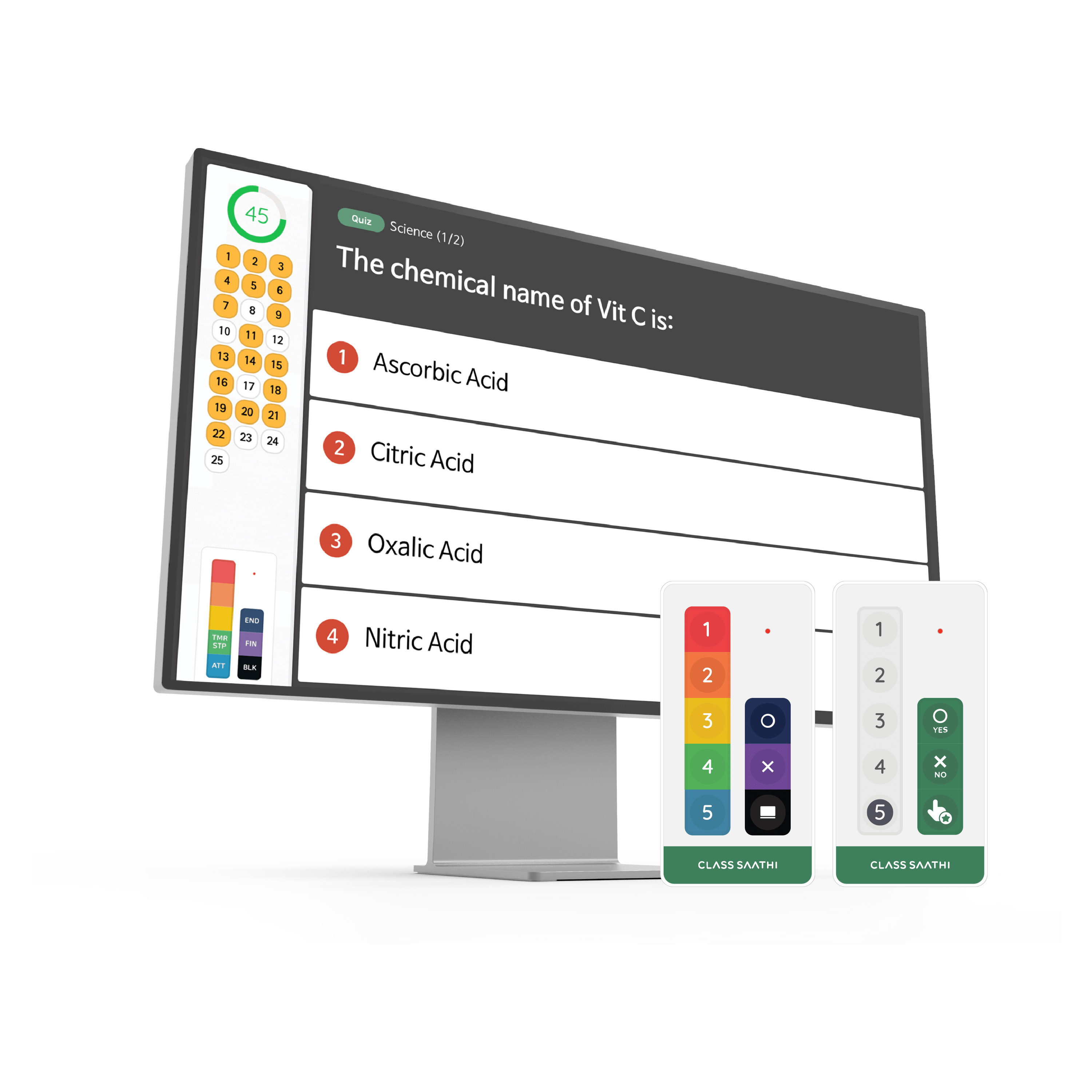Imagine a classroom buzzing with activity, where students aren't just listening to lectures, but actively participating, collaborating, and taking ownership of their learning journey. This captivating scenario is the reality of classrooms equipped with interactive classroom solutions.

This blog explores the impact of interactive classroom solutions on student engagement, and learning outcomes, and how innovative tools like Class Saathi empower educators to create these dynamic learning environments.
Beyond Textbooks: Redefining Engagement in the Classroom
The traditional teacher-centered classroom model can leave students feeling disengaged. Interactive classroom solutions address this challenge by leveraging technology to create a more participatory, dynamic, and student-centered learning experience. Here's how:
- Gamification: Incorporate game-based elements like points, badges, and leaderboards to make learning fun and engaging. This approach can boost motivation and knowledge retention.
- Real-Time Activities: Utilize clickers, polls, and digital whiteboards to foster real-time participation in discussions, quizzes, and collaborative tasks.
- Visual Learning: Enhance learning with multimedia resources like videos, simulations, and interactive presentations, catering to diverse learning styles.
- Student-Led Discussions: Empower students to take ownership of their learning by facilitating discussions, presentations, and peer-to-peer learning activities.
- Instant Feedback: Provide immediate feedback on student responses and participation, allowing them to adapt their learning strategies in real-time.
The Benefits of Interactive Classrooms: Beyond Just Fun
Interactive classrooms offer numerous benefits for both students and educators:
- Enhanced Student Engagement: Students become active participants in their learning, fostering a deeper understanding of concepts.
- Improved Learning Outcomes: Increased engagement translates to better information retention and academic achievement.
- Development of 21st Century Skills: Interactive classrooms promote critical thinking, collaboration, communication, and technology skills essential for success in the modern world.
- Formative Assessment: Real-time participation data provides valuable insights into student understanding, allowing teachers to tailor instruction accordingly.
- A More Dynamic Learning Environment: Interactive classrooms spark curiosity, creativity, and a love for learning in students.
Class Saathi: Your Interactive Classroom Companion
Class Saathi is a leading interactive classroom solution that equips educators with the tools they need to create engaging and effective learning experiences. Here's how Class Saathi empowers teachers:
- Interactive Clickers: Students use individual clickers to participate in polls, quizzes, and real-time activities, promoting active participation.
- Seamless Integration: Class Saathi integrates effortlessly with existing classroom technology and curriculum materials.
- Multimedia Content Creation: Develop interactive presentations, quizzes, and activities using a variety of multimedia resources.
- Real-Time Response System: Monitor student responses instantly, allowing for immediate feedback and adjustments to teaching strategies.
- Data-Driven Insights: Generate reports that analyse student participation and provide valuable data for personalised learning.
Investing in the Future of Education
Interactive classroom solutions are revolutionising the learning landscape. By incorporating these tools, educators can create dynamic environments that cater to diverse learning styles and empower students to become active participants in their education. Here are some additional benefits of interactive classrooms:
- Improved Teacher-Student Interaction: Interactive solutions facilitate a more interactive teaching style, fostering stronger student-teacher relationships.
- Differentiated Instruction: Technology allows educators to tailor lessons to individual student needs and learning styles.
- Preparation for the Future: Interactive classrooms equip students with the skills necessary to thrive in a technology-driven world.
Beyond Technology: Cultivating a Participatory Learning Culture
Technology is a powerful tool, but effective interactive learning goes beyond just the platform. Here are some additional tips:
- Collaborative Learning Activities: Encourage group projects, discussions, and peer-to-peer learning opportunities.
- Open-Ended Questions: Pose questions that encourage critical thinking and discussion, not just rote memorisation.
- Student Choice and Ownership: Allow students some level of choice in their learning activities to foster a sense of ownership.
Unlocking the Potential of Every Learner
Interactive classroom solutions are not just about bells and whistles; they are a powerful force for transforming the learning experience. By fostering a culture of participation, leveraging technology effectively, and providing opportunities for student ownership, educators can unlock the potential of every learner in their classroom.

Embrace the Future of Learning
So, embrace the possibilities of interactive classroom solutions and embark on a journey of transforming your classroom into a vibrant learning hub where every student feels engaged, empowered, and ready to thrive! Don't forget to explore innovative tools like Class Saathi to unlock the full potential of interactive learning.

